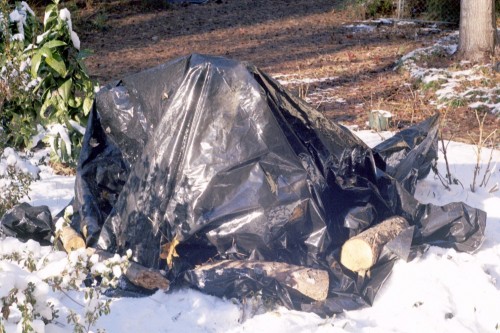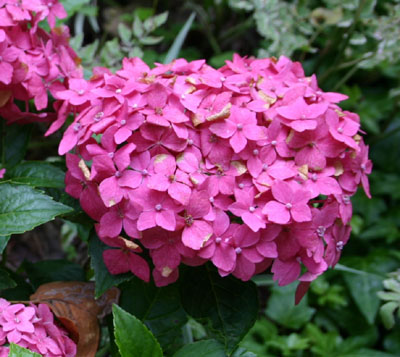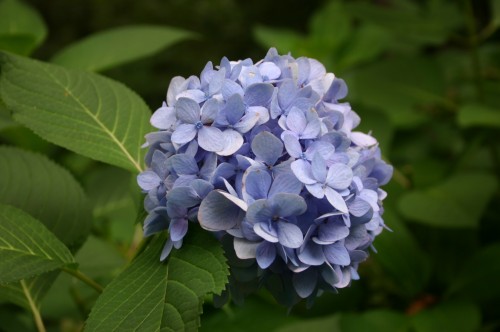





Hydrangeas are beautiful in summer but flowering can be damaged by cold winters. Particularly damaging is a winter warm spell followed by a hard freeze. I’ve seen bushes wrapped like lollipops with white sheets and I have seen quilts flung over shrubs with abandon. Neither practice is worth much, other than making the gardener feel better psychologically. The plant certainly won’t benefit from a pink chenille bedspread resting loosely on its branches.
The best way to protect plants is to capture the scant heat of the earth under an impermeable cover. Most folks use plastic but a big cardboard box might suffice.
I use black (not clear) plastic to cover my shrubs when cold emergencies loom. Clear plastic creates a “greenhouse effect” under it whenever the sun shines – even on a frigid day. It has to be removed if the day promises to be bright. Black, on the other hand, reflects sunlight. Air temperature under a black cover seldom rise more than a few degrees. I can leave it in place for several days without harm. Whichever cover you use, remember to anchor the edges firmly to the ground. I use firewood but earth, bricks or rocks could be used just as well.
One option is to replace your common hydrangeas with varieties that rebloom after winter cold:
‘Blushing Bride’ – blossoms start out white with blue or pink tints; bred from Endless Summer®
‘David Ramsey’ – hardy to zone 4; compact plant topping out at 4 feet
‘Decatur Blue’ – exceptional hardiness for northern gardeners
Endless Summer® ‘Bailmer’ – the first remontant to be introduced
‘Mini Penny’ – derived from ‘Penny Mac’; very compact
‘Oak Hill’ – similar to Endless Summer
‘Penny Mac’ – from the garden of Penny McHenry (founder of the American Hydrangea Society)
‘Forever & Ever’ – hardy to Zone 4, compact habit growing 3 feet tall and wide
‘Forever & Ever Double Pink’ – compact habit great for small gardens and containers
‘Forever & Ever Red’ – first red-flowering hydrangea, compact habit



Copyright © www.100flowers.win Botanic Garden All Rights Reserved